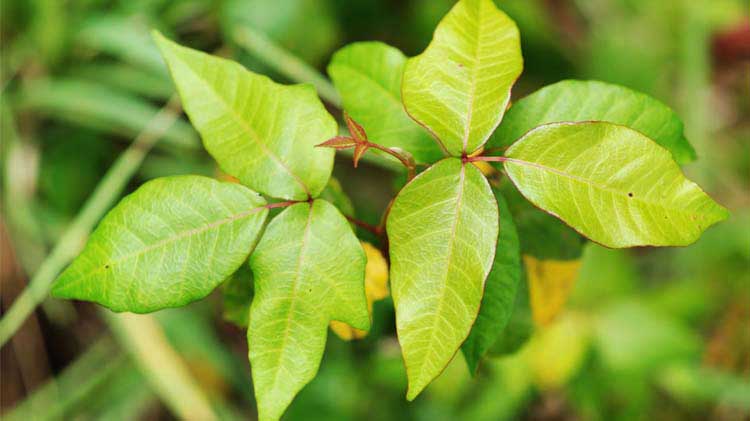How to identify poisonous plants and flowers
Toxic plants to keep out of reach of children and pets.
Your backyard may be your pride and joy, but are there poisonous plants hiding out among the greenery? "Leaves of three, leave them be" is a useful rhyme to help you recognize poison ivy and oak and avoid the itchy symptoms they bring, but that's just the beginning to recognizing toxic plants.
Many others don't fit into an easy characterization. Some of the most prized decorative plants and flowers can be quite harmful if ingested. If you have young children and pets, take care to steer them away. Here are some plants and flowers to look out for.
Common poisonous plants
- Poison ivy. This plant can be found all over the United States. It usually grows as a vine or small bush. It has 3 glossy leaves and the leaves change colors depending on the season, and may have flowers or berries. It can cause irritation of the skin if touched.
- Poison oak. Similar to poison ivy, it can be a vine or small shrub and can cause skin inflammation and symptoms like itching, redness and sometimes blisters.
- Poison sumac. Less common than poison ivy and poison oak, poison sumac is actually more toxic than the other two. Contact with this poisonous plant may cause a rash and swelling.
- Castor oil plant. This plant can be used in landscaping, and its oil seeds contain a toxic substance that if ingested can be fatal to humans and animals. It may cause severe vomiting, diarrhea and dehydration. It can also cause kidney and liver failure and death.
- Giant hogweed. It is an invasive plant and grows up to 14' high. It is usually found in New York, Pennsylvania, Ohio, Maryland, Oregon, Washington, Michigan, Virginia, Vermont, New Hampshire and Maine. This plant's sap combined with sun, can cause severe skin burns and permanent scars.
- Water hemlock. This bush has small white flowers and might grow as a weed close to wet areas of streams or meadows. It's a highly toxic plant and smells like carrots. It is very toxic to animals and humans, and attacks the nervous system. It is known to have killed the philosopher Socrates.
Common poisonous flowers
- Lily of the valley. This plant with beautiful white flowers can be deadly if ingested by humans or pets. All parts of the plant are toxic as they contain a substance called cardiac glycosides. This substance can prevent the heart from pumping.
- Foxglove. All parts of this pretty, bell-shaped flower are poisonous, and could even be lethal, if eaten. Foxglove (also known by its Latin name, Digitalis) grows wild throughout the United States and is cultivated in gardens because its white, creamy yellow, pink or rose flowers make an attractive addition. Because of its toxicity — bear in mind that a powerful heart medicine is derived from the plant — children must be carefully watched around it. It is also toxic to a range of animals, including livestock, cats and dogs.
- Hydrangea. A common shrub with clusters of flowers in pink, purple, white or blue, hydrangeas can be toxic to people and pets if large quantities are eaten. Symptoms include stomach ache, nausea, vomiting and sweating, but it's usually not deadly.
- Oleander. This shrub is used in gardens and has beautiful flowers, but all parts of the plant are highly poisonous to both animals and humans. Even a small amount ingested can cause serious harm. After ingesting it, some symptoms are irregular heartbeat, shaking, drowsiness and confusion.
- Rhododendron and Azalea. These two plants are close relatives and ingestion of these plants can cause similar toxicity. Symptoms may include stomach pain and vomiting, breathing issues, paralysis, coma and even death. In some cases, honey from bees that have fed on these plants' nectar has shown high levels of toxicity. This honey is sometimes called "mad honey". It is important to note that in some cases the azalea flower may be mistaken for a honeysuckle flower.
- Mountain laurel. This plant is dangerous to both animals and humans if it is ingested. Some of the poisoning symptoms are irregular breathing, convulsion and diarrhea. It can also cause coma and death. It is mostly fatal if ingested by grazing animals, and is also called "sheepkill." It can be found in pastures and clearings.
- Bitter nightshade. This vine-like plant is found in the United States and other parts of the world. The stem has been used to make medicine for skin conditions, but there is no conclusive evidence of its effectiveness. On the other hand, both leaves and berries of this plant are poisonous. Some of the symptoms after ingestion are: headache, vomiting, internal abdominal bleeding and even death.
- Jimsonweed. Also known as "devil's trumpet," this weed can be found everywhere in the United States. It has a long, white or purple flower. It can cause sickness in animals and in humans, including rapid pulse and breathing, diarrhea and convulsions. In some cases, it can cause hallucinations. This plant is also known as "Jamestown weed." It has been documented that in the late 1600s many British soldiers were sent to Jamestown, Virginia, to fight a rebellion. Many soldiers ate this weed on a salad and became intoxicated and acted silly for more than 10 days.
Other dangerous plants for pets
- Aloe. This is a great plant to have on hand as a natural salve for burns. However, it can be harmful to pets if ingested and can cause vomiting, diarrhea and tremors. If you have this plant, keep it at paw's length.
- Wisteria. This vine has beautiful blue or purple flowers, but its pods and seeds can be toxic when ingested by dogs and cats. It may cause vomiting and diarrhea.
- Lilies. These popular flowers, especially "daylily" and "true lily" types are extremely unsafe for cats. All parts of the plant are toxic including flower, stem, pollen and leaves, including water from a vase where the flowers are. If ingested, cats can suffer from fatal kidney failure. If dogs eat them, they may develop some mild stomach symptoms.
- Daffodil. It is a popular spring, yellow flower and if eaten by a dog it can cause diarrhea, drooling and heart issues. The most dangerous part of this plant is the bulb.
Simple Insights® has some other tips for pets. Learn more about pet safety including safe plants for your pets and how to pet proof your home.




